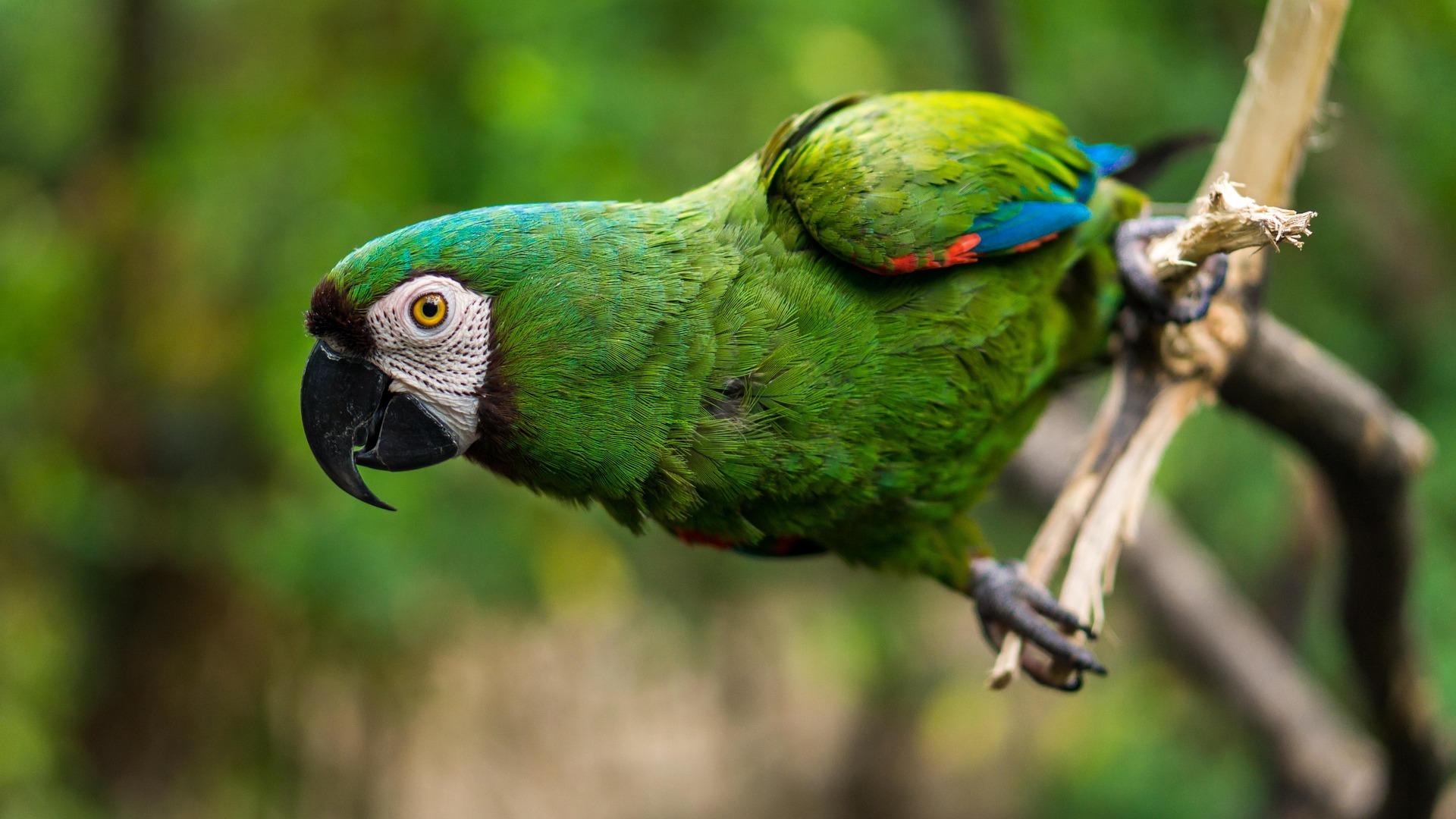1. Parrots Have Highly Developed Brains
Parrots belong to a group of birds called vocal learners, animals that can hear sounds and then reproduce them. This rare ability is shared by only a few animal groups, including humans, dolphins, some whales, and a few other birds.
In parrots, scientists have discovered a unique p art of the brain called the “song system.” This region helps control how they learn and produce sounds. Even more interesting, parrots have an extra outer layer in this region (called the “shell”) that isn’t found in other birds, and it’s thought to play a big role in their incredible mimicry skills.
2. They Don’t Have Vocal Cords, But They Do Have a Syrinx
Unlike humans, parrots don’t have vocal cords. Instead, they produce sound using an organ called the syrinx, located at the base of their trachea. The syrinx can produce a wide range of sounds thanks to its muscular control and flexibility. Combined with precise breathing, parrots can imitate the pitch, tone, and rhythm of human voices surprisingly well.
3. Parrots Are Excellent Listeners and Mimics
Parrots actually listen closely to sounds in their environment. In captivity, humans become their flock, so they mimic us instead!
Parrots don’t understand grammar or complex meaning the way humans do, but they can associate specific words or phrases with actions, objects, or emotions especially with training and repetition.
Fun Fact: Not All Parrots Talk Equally
While many parrots have the potential to talk, some species are better at it than others. For example:
- African Grey Parrots are famous for their large vocabularies and clear pronunciation.
- Budgies (Budgerigars) are small but incredibly skilled mimics.
- Amazon Parrots often have expressive, emotional-sounding speech.
Of course, personality matters too, some individual birds are chattier than others!
